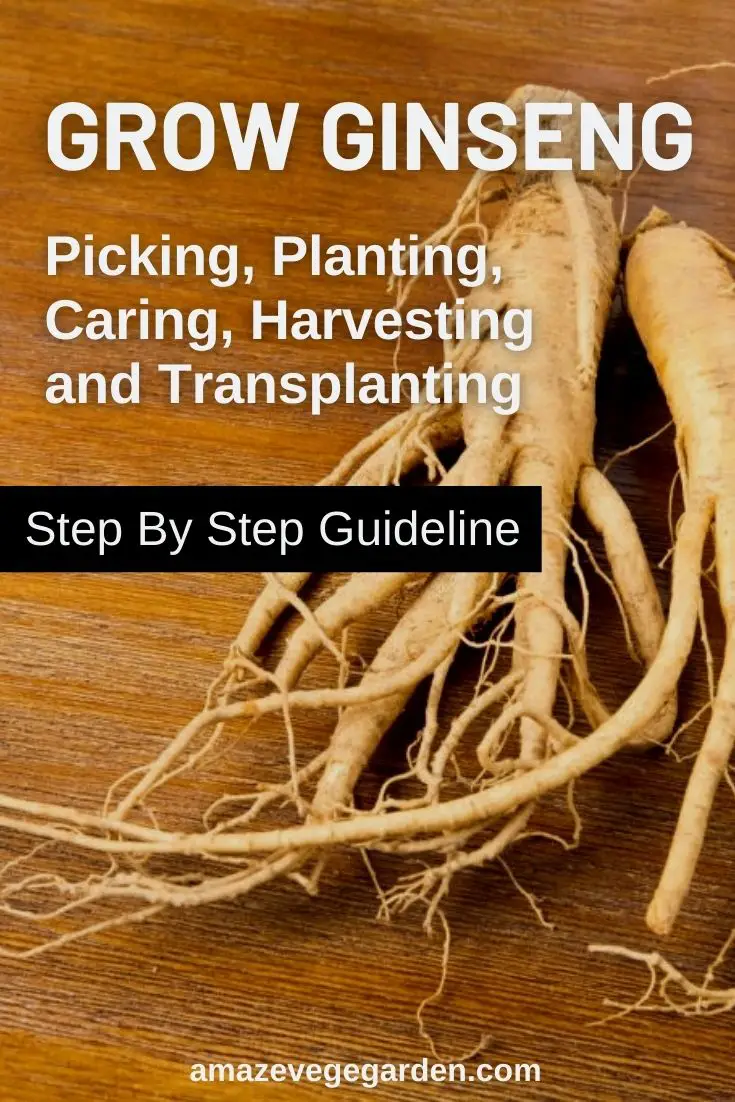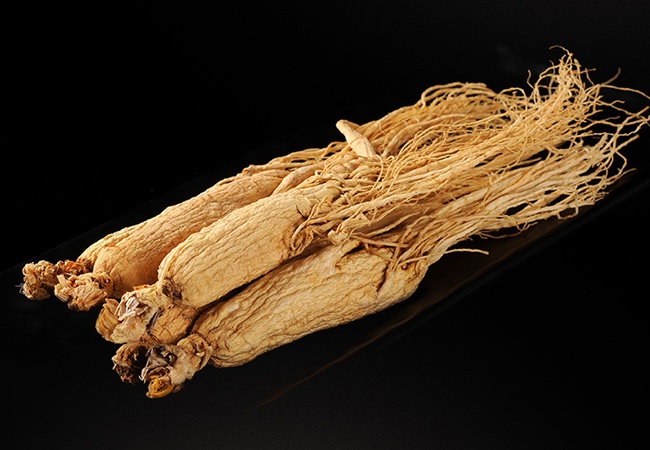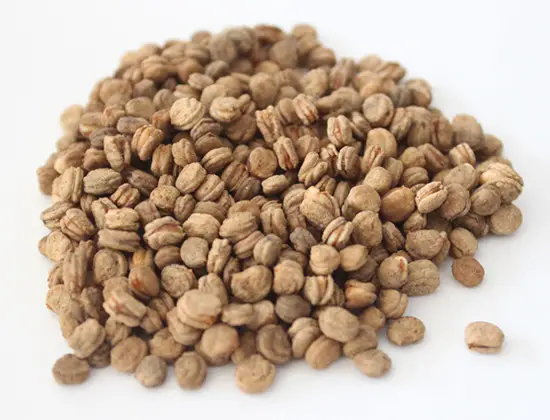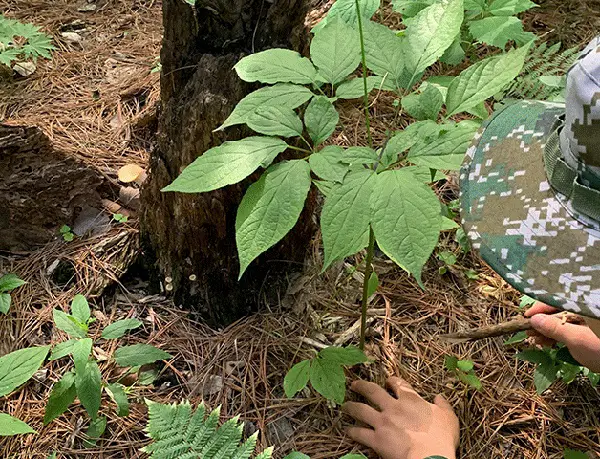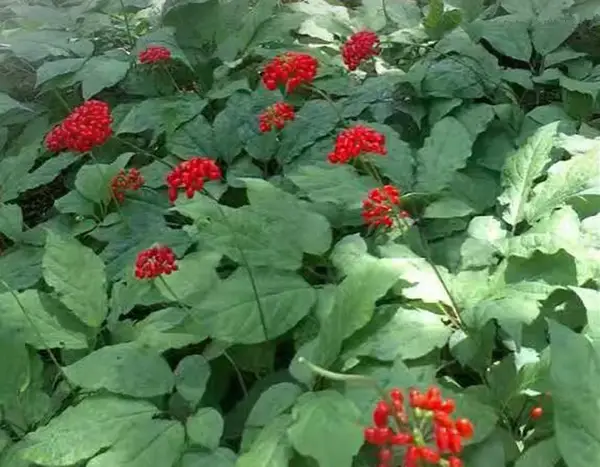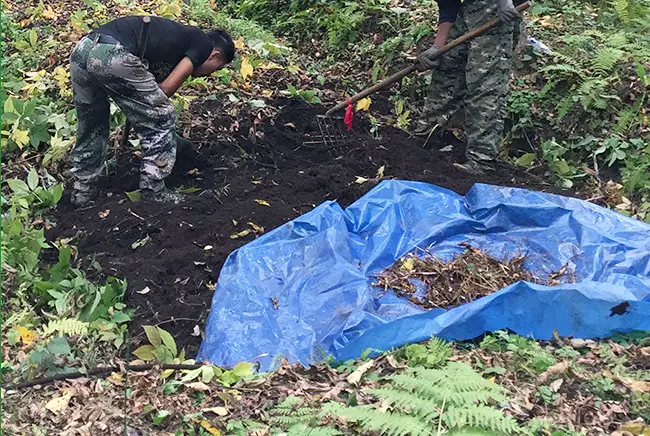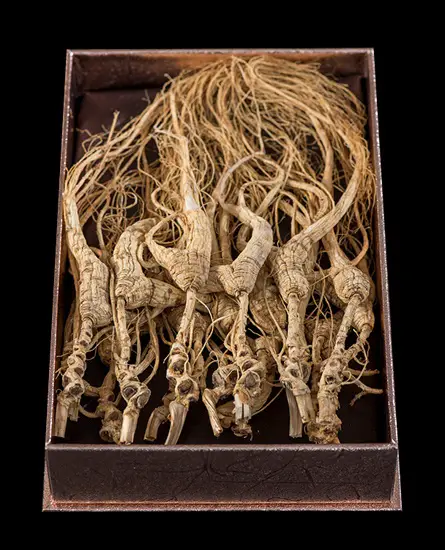Ginseng is a herbaceous perennial plant that has been used for centuries in traditional Chinese medicine. It grows best in woodlands, taking up to five years to reach maturity and produce the required root material for medicinal use.
Ginseng requires special attention when planting and maintaining, with some conditions needing specific consideration such as shade levels, moisture availability and temperature ranges. To ensure success when growing ginseng on any scale it is important to understand these requirements thoroughly before starting out. Preparation of the land must be carried out correctly prior to sowing seeds or transplanting seedlings, followed by careful monitoring throughout the growth process.
In order to achieve desired results when cultivating ginseng there are several key factors which need to be taken into account including selection of appropriate sites and timing of sowing/transplanting; management practices such as weeding, pest control and mulching; harvest time; post-harvest handling procedures; storage methods; and replanting considerations. By following this advice carefully you can enjoy the rewards associated with growing your own ginseng plants while also contributing towards conserving this valuable resource for future generations.
What Is Ginseng?
Ginseng is an incredibly popular medicinal herb, known for its mysterious properties and ability to restore health. Revered around the world for centuries, it can be found in rural areas of Asia, Europe, and North America. Growing ginseng requires patience, knowledge, and dedication — but those who take on this challenge are rewarded with a valuable commodity at harvest time.
The species most commonly used in traditional medicine is Panax ginseng, which has been studied extensively over the years by scientists. It contains up to seven different types of saponin compounds called “ginsenosides,” which have beneficial effects on human physiology and biochemistry. The root also contains essential oils that provide additional therapeutic benefits when consumed or applied topically.
One study conducted by Chinese researchers showed that ginseng had powerful antioxidant properties and could help protect cells from damage caused by free radicals. This finding suggests that regular consumption of this herb may improve overall health and well-being. With all these potential benefits, it’s no wonder why so many people seek out ginseng as part of their daily routine.
Ginseng Types And Varieties
Ginseng is a plant with immense popularity, as it can be found in countries around the world. According to researchers at Cornell University, there are eleven varieties of ginseng that have been identified globally. The most common include:
- American Ginseng (Panax quinquefolius)
- Asian or Korean Ginseng (Panax ginseng)
- Chinese Ginseng (Panax notoginseng)
- Indian Ginseng (Withania somnifera)
- Japanese Ginseng (Panax japonicus)
These five varieties represent the different species of ginseng available and each has its own unique characteristics and benefits. For instance, American ginseng is known for its calming effects on the body while Asian or Korean ginseng is more energizing. Similarly, Chinese ginseng helps improve mental focus and concentration, Indian ginseng offers an immunity boost, and Japanese ginseng is believed to help reduce stress levels.
The various types of ginseng have also led to many new products being developed from them such as supplements, teas, tinctures, and extracts. Each type of product may contain different concentrations of active ingredients which can produce varied results when consumed by individuals looking to benefit from their healing properties. It’s important to note that some forms of these products have stronger effects than others so it’s critical to do your research before purchasing any kind of supplement or extract derived from a variety of ginsengs.
In addition to its medicinal qualities, certain types of ginsengeroot have also long been used in traditional dishes throughout Asia where they provide flavor and texture in soups, marinades and stir-fries alike. As a result, there are many recipes incorporating this versatile herb into meals worldwide making it easier for anyone wanting to experience the power of this ancient plant without having to live near naturally growing areas with suitable conditions for cultivation.
Buying Ginseng Seeds
Most people will start to plant ginseng crops by buying ginseng seeds since it is the least expensive and easiest way to grow the plant. You should ask the suppliers what kind of seeds they are supplying before ordering. For your information, most of them only sell stratified seeds.
Ginseng seeds are stratified by storing them for one year in a buried container holding several alternating layers of damp sand and seeds. Photo of ginseng berries. Stratification allows the seeds to go through the natural process of preparing for germination in a protected environment.
When ginseng plants reach 3-5 years of age, they begin to produce pods of green berries with each berry containing 2-3 seeds. In the fall the berries turn red (see photo at right) and fall to the ground a few days later, helping “re-seed” the forest floor to keep the ginseng population alive.
Many of the berries will be eaten by rodents and other animals before they have a chance to get covered up with leaves where they will be partially protected, and even the ones that get covered over are still subject to being eaten by rodents and dying from the disease.
All in all, since it takes 2 years for ginseng seeds to germinate, just a fraction of the ones produced in the wild survive long enough to germinate and develop into a ginseng plant.
By purchasing only stratified seeds (see photo at right), you will be planting seeds that will come up the following spring, greatly reducing the amount of time they will be vulnerable to animals and disease.
When your seeds arrive, be sure to check them to ensure that they are firm and in good shape. If not, send them back and ask for replacements or a refund. You can expect to receive anywhere from 7,000 – 8,000 stratified ginseng seeds for every pound ordered.
Collecting and Stratifying Your Own Ginseng Seeds
One of the best things about growing a crop of ginseng is the fact that you can collect the ripe red berries from your plants every fall and stratify your own seeds, reducing or even eliminating the need to buy seeds for planting your next crop.
Here are the steps to follow in order to stratify your own ginseng seeds:
- Collect the mature berries from your ginseng plants (after they turn bright red).
- Drill 1/16-inch holes on the sides and bottom of a standard five-gallon plastic bucket.
- Dig a hole in a shaded, well-drained area and bury the bucket so that the top is three inches below the surface of the ground.
- Place a 1-inch layer of damp sand in the bottom of the bucket and then place a 1-inch layer of ripe berries on top of the layer of sand.
- Next, place another 1-inch layer of damp sand on top of the berries.
- Cover the top of the bucket with a sturdy piece of plywood.
- Repeat this process every time you harvest more ripe berries, alternating a layer of berries with a layer of sand until there are no more berries left to “pick” and stratify.
- After the last layer of berries has been placed in the bucket, place a final 2-inch layer of damp sand on top.
- Place the plywood cover on top of the bucket once again and cover everything with 3 inches of soil followed by a layer of leaves or mulch.
- Leave the bucket and its contents undisturbed until the following July, then dig up the bucket and retrieve the stratified ginseng seeds for fall planting.
Planting Ginseng Seeds or Rootlets
Now that you have selected a site for your ginseng patch and procured your seeds or rootlets, it’s time to prepare for the planting process. The best time to plant ginseng seeds or rootlets is in the fall (September through November) or early spring (March and early April).
The process for preparing the soil and planting the seeds or rootlets will vary greatly depending on how you plan to grow your ginseng crop. There are four popular methods of growing ginseng, each with its own set of advantages and disadvantages:
1. Wild Ginseng
The ginseng that grows wild in the woods is the most sought-after kind. Overall, less work is required to harvest wild ginseng. All you have to do is go on a hunt for ginseng and harvest the mature roots when you find them (with the permission of the property owner and in accordance with state regulations of course). Providing you can locate a patch of woods with a stand of mature plants, wild ginseng can be harvested annually. When sold, wild ginseng fetches a hefty price tag.
2. Wild Simulated Method
I highly recommend the “Wild Simulated” growing method, which requires minimal setup on your part. Raking back the leaves over a tiny plot and digging a hole an inch deep is all that’s required to plant a single seed or rootling. Cover the seed or root cutting with soil, replace the previously removed leaves, and water thoroughly.
Ignore the advice of your seed or rootlet supplier if you want your plants to grow as they would in the wild, and scatter their contents across the hillside instead of planting them in neat rows.
Why? The simple reason is that if your ginseng is planted in neat rows, even someone who has never seen the plant before will be able to tell that something has been planted there and use that information to make an educated guess that it is likely ginseng.
But if your ginseng plants are randomly scattered among the other natural foliage, nobody will notice that they are walking through a plot of “green gold” unless they are familiar with the appearance of the ginseng plant.
Don’t forget that once they realize what it is, even people who have no idea what ginseng looks like will often poach it. After all, it’s common knowledge that ginseng roots can be sold for a tidy sum.
3. Woods-Grown Method
You should definitely plant your ginseng in rows if you intend to use the “Woods-Grown” method to cultivate your crop. Using rows that go up and down the hill, rake the leaves.
It’s recommended to leave about 3 feet of space between rows. Plenty of space to walk between the rows and do things like weeding and fertilizing and pest-proofing is provided by this 18-inch separation.
In order to give your ginseng the best possible start, after you’ve gotten rid of the leaves, you should use a garden hoe to dig up any and all native plants. The next step is to use the hoe to create troughs about an inch deep along the length of the newly exposed rows.
Separate the troughs by at least 12 inches. Once the troughs are dug, you can plant your seeds or root cuttings about 10 inches apart vertically and horizontally in each one.
After all of your stock has been planted, you can either cover the rows with hardwood mulch or put back the leaves that you raked back earlier. The seeds or rootlets and the new shoots that will emerge in the spring would benefit more from a leafy covering, in my opinion.
4. Field-Cultivated Method
Growing ginseng in a “Field Cultivated” setting is very similar to doing so in a “Woods-Grown” setting, with the exception that extensive tilling of the soil is required before planting and a lattice structure is erected to provide shade.
Plow and disc the area of land as you would for any other crop. The next step is to “lay off” your rows using a garden hoe, just like in the “Woods-Grown” method, and then plant your seeds or rootlets. Mulch the entire plot and cover the plants with soil (chopped-up leaves are best, followed by hardwood mulch).
Putting up your shading apparatus is the final step. A possible solution would be to construct a roof with narrow boards set at a distance of about 2 inches apart. This will let in just the right amount of light, simulating the natural shade of a wooded lot for the plants.
The structure could also be covered with a roll of one of the many different types of shading material available at any given farm supply store. Since ginseng plants need some sunlight, the material should be dark without being opaque.
Finally, a high, sturdy fence around your ginseng plot can deter potential poachers. To learn more about how to secure your ginseng crop, including instructions on building a fence, read the page dedicated to that purpose.
Planting Seeds Or Roots
Planting ginseng is a remarkable experience, and it requires an immense amount of preparation. Once the soil has been amended with compost, manure, and other organic matter, it is time to take the next step in this magical journey – planting either seeds or roots.
Ginseng can be grown from seed or root cuttings that are planted directly into the ground. Seeds should be soaked overnight before being planted at least one-half inch deep and two feet apart in rows spaced three feet apart. It’s best to plant them between late August and early October for optimal germination rates. Root cuttings should also be soaked overnight prior to planting about one inch deep and three inches apart in prepared beds. By following these guidelines you will ensure your success in growing vibrant ginseng plants.
In addition to proper planting techniques, there are several management practices that need to be followed throughout the season including mulching around the plants, controlling weeds and pests, as well as ensuring adequate water requirements for optimum growth.
Water Requirements
Water is a necessary ingredient in the cultivation of ginseng. Adequate and consistent moisture levels are needed to ensure successful growth and harvest. A well-draining soil mixture should be used, with organic compost added for nutrients. The planting area should be irrigated as often as possible, preferably on a daily basis, but at least three times per week.
Watering must be done slowly so that it does not wash away any seeds or rootlets planted during germination. During dry periods, additional water may need to be applied more frequently to maintain adequate moisture levels. Mulching can also help retain moisture in the soil and reduce weed competition around plants.
Ginseng requires access to both moist and dry conditions throughout its growing season: too much or too little water can lead to stunted growth or even death of the plant. Therefore, careful monitoring of both rainfall amounts and irrigation schedules is essential for the successful cultivation of ginseng crops.
By providing appropriate watering techniques, growers can ensure their plants have enough hydration while avoiding potential issues related to overwatering or flooding.
Shade And Sunlight Requirements
Ginseng is a species of plant that requires very specific growing conditions in order to thrive. As such, it needs ample amounts of both sunlight and shade during its growth cycle. It should be planted in an area where it will receive morning sun and afternoon shade, or dappled light throughout the day. This helps create a balanced environment for the ginseng to grow healthily.
When planting ginseng, ensure that your plot receives at least five hours of direct sunlight each day, but not more than eight hours. If the plant does not get enough sunlight, it can become leggy and weak as it searches for additional sources of energy. Too much sunshine can cause the leaves to burn and turn yellow or brown due to overexposure. Be sure to monitor the amount of direct sunlight your plants are receiving on a regular basis.
It is also important to note that too little shade can prevent root development from occurring properly. When selecting a site to cultivate ginseng, look for areas with good drainage and partial coverage from trees or other structures which provide filtered light in the late afternoons when temperatures tend to be hotter. The ideal environment should remain relatively cool while still allowing adequate exposure to natural light.
Fertilizers And Nutrient Supplements
Studies show that proper fertilization and nutrient supplementation can have a significant impact on ginseng growth. The most important nutrients for successful ginseng production are nitrogen, phosphorus, and potassium. Other essential minerals include calcium, sulfur, magnesium, iron, boron, zinc, copper, and manganese. For optimal performance of the plant, it is important to provide adequate amounts of these elements in the soil or through the application of balanced fertilizer or other nutrient supplements.
When applying fertilizers or supplements to your ginseng beds, use caution as too much can be detrimental to the plants. It is best to start with low doses and gradually increase them as needed according to soil test results and observations about the overall health of the crop. Organic sources such as composted manure or fish emulsion can also be beneficial but should be used carefully as they may contain high levels of salts which could damage sensitive roots when applied excessively.
Careful consideration must also be taken regarding the timing of fertilizer applications throughout the growing season. Too little at certain times may result in stunted growth while too much could cause root burn or leach into the groundwater where it could become an environmental hazard.
Pest Control
Pest control is an important aspect of ginseng cultivation. As the root matures, it becomes more susceptible to damage from pests such as deer, rabbits, and voles. Additionally, diseases caused by fungi or bacteria can occur if proper pest management strategies are not implemented. In order to protect the ginseng plants, several methods should be employed.
One technique for controlling pests is fencing around the garden area. This will help keep out large animals that could otherwise damage the crop. Fencing should also be combined with other techniques such as repellents and traps in order to maximize protection against all types of predators. Repellents work best when they are applied just before bloom time while traps can be used throughout the season to catch any unwanted visitors.
Another strategy for keeping pests away from ginseng is creating a diversified habitat within the growing environment. Planting companion crops along with your ginseng can provide nutrients and attract beneficial insects which feed on potential invaders like aphids and scale insects. This approach helps reduce pesticide use while supporting biodiversity in nearby ecosystems at the same time.
Harvesting Your Ginseng Crop
All right, so you’ve planted your ginseng seeds or rootlets, cared for them as needed, and waited patiently as they grew and flourished over the course of several years. What an excellent accomplishment! Here you’ll find information on how to harvest ginseng roots and get them ready for drying in a way that’s both effective and secure.
The best time to harvest your mature ginseng roots is in the fall after the berries have ripened but before the plant tops have withered away for the season. Note: Be sure to harvest any ripe berries before digging up the roots!
If your ginseng patch is on a slope, you should begin harvesting the mature roots at the base of the slope and work your way to the top. If your plants are organized in rows, start at the bottom and work your way up before moving on. In order to prevent burying the plants or roots below you with the soil you remove while digging up the roots, it is best to work uphill.
My experience has taught me that the best tool for extracting ginseng roots is a sturdy hunting knife. The blade can be used to carefully scrape the soil away from the root and to remove any unwanted roots from nearby plants or trees that have grown into the ginseng beds. Remove soil carefully beginning at the point where the plant’s top emerges from the ground. Repeat this process until the root is exposed. Avoid damaging the roots at all costs, and leave as many of the fine hair-like branches as you can.
Roots dug up from the ground can be stored in a bucket, basket, or carpenter’s apron. Both are acceptable, but the apron offers more practicality.
Once you’ve filled your apron, bucket, or basket, make sure to store the roots somewhere cool and shady to keep them from drying out or becoming sunburned.
Some of your ginseng roots will remain dormant each year and not produce new growth when spring arrives. Such activity is entirely typical and does not suggest a problem with your crop. Because of this, you will not be able to gather all of your roots in a single growing season. You can always gather the few stragglers the following autumn.
Drying And Storing The Ginseng
Harvesting and drying ginseng is a critical step in the cultivation process. The harvested roots should be washed thoroughly before being dried, to remove any remaining soil particles or debris. For optimal results, it is best to use low-temperature air dryings methods such as screen trays, dehydrators, or warm room temperature settings on ovens. Care must be taken not to dry too quickly; this will cause cracking of the rootlets and reduce their potential market value. After 4–5 days of drying, the roots will have lost all moisture content and can then be stored for up to 2 years.
Proper storage containers are essential when preserving ginseng. It’s important that they remain tightly sealed to prevent exposure to excessive heat or cold which could result in spoilage or dehydration. Glass jars with lids work well due to their superior ventilation properties, but plastic bags also do a good job if used correctly. It’s recommended that each container contain only one variety of seeds so that its quality is maintained over time. Finally, storing at temperatures below 40°F (4°C) helps maintain the freshness and potency of the product for future sale or replanting purposes.
Replanting Wild Ginseng Rootlets
The art of cultivating ginseng has been passed down through generations as a way to connect with nature and heal the soul. For many, replanting wild ginseng rootlets is a rewarding experience that allows them to nurture their relationship with their environment while also growing an incredibly valuable plant. With the right knowledge and care, anyone can successfully grow ginseng in its natural habitat.
When replanting wild ginseng rootlets it is important to consider the unique characteristics of your local ecosystem. The ideal location should be well-shaded, relatively moist, and sheltered from strong winds or heavy rainfall. Ginseng prefers rich soils that are high in organic matter so adding compost, manure or mulch will help create an optimal growing environment for these delicate plants.
Once you have selected your planting site, carefully dig out holes approximately 4 inches deep and 2 feet apart using hand tools such as trowels and shovels – mechanical equipment may damage the fragile rootlets. Plant each individual rootlet horizontally into its hole ensuring that at least half of the root remains exposed above ground level before covering lightly with soil. Water immediately after planting to ensure successful germination.
In addition to creating a favorable microclimate for growth, providing nutrition for your plants is essential when replanting wild ginseng rootlets. Fertilizing regularly with a slow-release fertilizer containing nitrogen, phosphorus, and potassium along with other micronutrients will give your plants the energy they need to thrive in challenging environments.
Applying mulch around the base of each plant can also help retain moisture during dry periods which will further improve the health of your crop over time. If possible apply foliar sprays containing calcium to prevent nutrient deficiencies and encourage healthy leaf growth throughout the year – this simple step can make all the difference between success and failure!
Replanting wild ginseng rootlets offers a great opportunity to become more deeply connected with nature while reaping some financial rewards too! With proper planning and careful consideration given to local environmental conditions, anyone can cultivate their own patch of prime quality ginseng roots – ready for harvest within 3-5 years depending on climatic conditions.
Can Ginseng Be Grown Indoors?
Ginseng can be grown indoors with great success. To do so requires a space that gets both sunlight and shade, as well as proper watering and soil conditions. While the challenge of growing ginseng inside may seem daunting to some, there are ways to make it easier.
First, it is important to select an appropriate container for the plant. A larger pot will provide more room for the ginseng’s roots to develop and allow better drainage of water. The container should also have adequate holes in the bottom and sides to encourage air circulation around the root system.
Second, the right kind of soil must be chosen; one that offers good drainage but still holds moisture enough for the plants’ needs. Planting mix or composted manure mixed with peat moss works best as these materials help retain water while allowing oxygen into the soil’s structure which helps promote healthy growth. It is also beneficial if fertilizer is added at planting time; this gives extra nutrients needed by ginseng during its early stages of development.
Finally, indoor temperatures must remain consistent throughout day and night cycles in order for optimal growth potential from ginseng seeds and cuttings planted indoors. During winter months when temperatures drop too low outside, ensure supplemental lighting is provided inside your home for 12-14 hours per day in order to keep your indoor environment warm enough for successful germination and growth of ginseng seedlings or transplants alike.
Where Does Ginseng Like To Grow?
Ginseng is grown in many places around the world, but it prefers a few specific climates. In North America, ginseng grows best in hardwood forests with partial shade and moist soil rich in organic material such as leaves and hummus. It does not do well if exposed to too much direct sunlight or if planted in dry soil conditions. The ideal temperature range for growing ginseng is between 50°F (10°C) and 75°F (24°C).
The most important factor when deciding where to grow ginseng is the amount of moisture available throughout the growing season. Ginseng needs consistent moisture levels that are neither too wet nor too dry; otherwise, it will suffer from drought stress or root rot. To ensure adequate moisture, soils should be mulched heavily with organic material like straw or bark chips. A drip irrigation system can also be used to provide additional water during periods of prolonged drought.
When selecting a site for planting ginseng, it’s essential to consider other factors including potential pests, diseases, and competition from weeds and grasses. Planting ginseng on raised beds can help reduce weed pressure while providing good drainage and air circulation. Additionally, choosing varieties of ginseng that are better suited to your local climate can improve overall growth performance.
With careful selection of a suitable location along with proper care and maintenance practices, the successful cultivation of this valuable herb can be achieved.
Is Growing Ginseng Worth It?
Growing ginseng can be profitable if done correctly. Many factors come into play when determining whether or not it is worth growing, such as the cost of equipment, land availability and quality, soil type, climate conditions, market demands, and prices.
When considering these factors, an individual must consider the expenses associated with starting a ginseng farming business and decide whether or not they are willing to commit the necessary funds needed to start up. Equipment costs vary depending on the size of the operation but could potentially include items such as shovels for digging, seed scoops, trays for planting seeds, hoes for weeding, and harvesting tools like root cutters and sifters. In addition to equipment costs, there may also be additional startup fees related to preparing soils prior to planting. All of these expenses should be taken into account before investing in a ginseng farm.
Climate conditions must also be considered in order to help ensure successful growth results. Proper temperatures are essential during both germination and harvest seasons. For example, optimum temperature ranges differ depending on which region you’re located in; some areas require warmer climates while others need cooler ones. Additionally, access to water sources is critical because too much or too little may cause stunted growth or death in plants.
The demand for ginseng products directly affects profitability potential. If an area does not have a large enough consumer base then any profits made from selling products will likely diminish significantly over time due to a lack of interest from buyers who may prefer other herbs instead of ginseng roots. Ultimately, researching local markets thoroughly beforehand is key for success when deciding if growing this herb is truly worth it financially speaking.
In A Nutshell
Ginseng is an ancient and valuable plant, with many species native to North America. It’s long been used for medicinal purposes, but also has great potential as a crop for small-scale farmers or home gardeners. Growing ginseng requires some specialized knowledge of soil requirements, seed planting techniques, water needs, and other factors that vary by climate and location. However, it can be done successfully if those considerations are taken into account.
The story of one farmer in Wisconsin serves as a testament to this fact; he began growing the root after seeing its potential value and invested considerable time learning how best to care for his plants. After several years of hard work and dedication, his efforts paid off—he was able to harvest enough ginseng from his plot to make a significant profit at market prices. This success inspired others in the area to try their hand at cultivating this unique plant themselves, further contributing to its economic value.
Growing ginseng can provide both pleasure and financial reward, making it an attractive option for anyone looking to diversify their portfolio or take up a new hobby. With proper know-how and attention given to details like watering schedules and appropriate soil preparation, even novice growers can succeed in producing quality yields of this precious resource.
Did you find this post useful? Would you like to get back to it later? Save THIS PIN below to your gardening, herbs, or house plant board on Pinterest! Thanks 🙂
